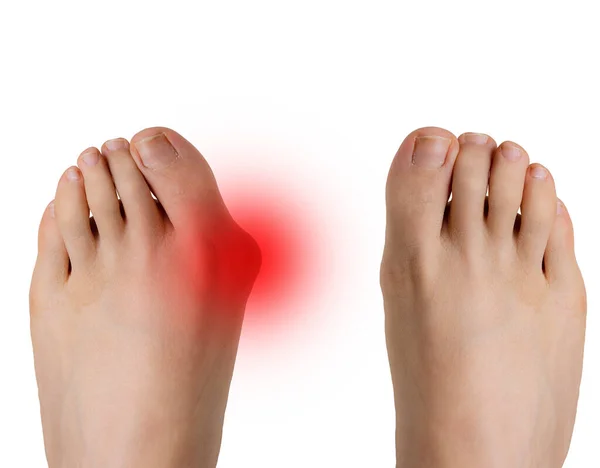
Image Source: Google
Bunions refer to a bony bump that forms on the joint at the base of the big toe, causing pain, inflammation, and discomfort. If left untreated, bunions can worsen over time and lead to limited mobility and difficulty wearing shoes. However, the good news is that there are various effective treatments available to alleviate bunion symptoms and prevent further progression. In this comprehensive guide, we will explore different treatment options that can help individuals take a step towards relief from bunion pain. If you’re looking for more information about treatment for bunions, you may check this out.
One of the first steps towards addressing bunions is to wear proper footwear that provides ample space for the toes and offers good arch support. Shoes with narrow or pointy toe boxes can exacerbate bunion pain by squeezing the toes together and putting pressure on the bunion joint. Opt for shoes with a wide toe box and low heels to reduce discomfort and prevent the bunion from worsening. Additionally, using bunion pads or cushions can help protect the bunion from friction and reduce pain while walking.
Another non-invasive treatment option for bunions is physical therapy. Physical therapy can help strengthen the muscles in the foot and improve flexibility, which can alleviate bunion pain and improve overall foot function. Therapists may also recommend specific exercises to stretch and realign the toes, helping to correct the alignment of the big toe and reduce pressure on the bunion joint.
In some cases, orthotic devices such as bunion splints or toe spacers may be recommended to help realign the toes and relieve pressure on the bunion joint. Bunion splints are worn at night to hold the big toe in the correct position, while toe spacers can be worn during the day to help separate and straighten the toes. These devices can help prevent the bunion from worsening and provide relief from pain and discomfort.
If conservative treatments are not effective in relieving bunion symptoms, a healthcare provider may recommend corticosteroid injections to reduce inflammation and pain in the bunion joint. Corticosteroid injections can provide temporary relief from bunion pain and swelling, allowing individuals to engage in daily activities without discomfort. However, it is essential to note that corticosteroid injections are not a long-term solution and should be used in conjunction with other bunion treatments.
In severe cases where conservative treatments are ineffective, surgery may be necessary to correct the alignment of the big toe and remove the bunion bump. There are several surgical options available for treating bunions, including osteotomy, arthrodesis, and exostectomy. During surgery, a healthcare provider will realign the bones in the foot, remove the bunion bump, and secure the toe in the correct position using screws or plates. While surgery is typically considered a last resort for treating bunions, it can provide long-term relief for individuals with severe bunion deformities.
Regardless of the treatment option chosen, it is essential for individuals with bunions to practice good foot care and maintain a healthy lifestyle to prevent further progression of the condition. This includes maintaining a healthy weight, wearing supportive shoes, and performing regular foot exercises to strengthen the muscles and improve flexibility. By taking proactive steps towards managing bunion symptoms, individuals can find relief from pain and discomfort and improve their overall quality of life.
In conclusion, bunions can be a source of pain and discomfort for many individuals, but effective treatments are available to alleviate symptoms and prevent further progression. By wearing proper footwear, practicing physical therapy, using orthotic devices, and considering medical interventions when necessary, individuals can take a step towards relief from bunion pain. It is essential to consult with a healthcare provider to determine the most appropriate treatment plan based on the severity of the bunion and individual needs. With the right approach and proactive management, individuals can find relief from bunion pain and improve their foot health in the long run.